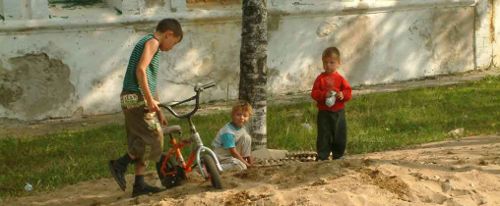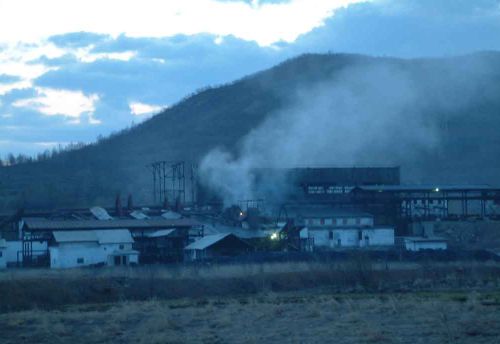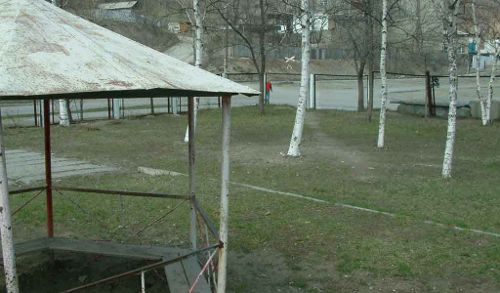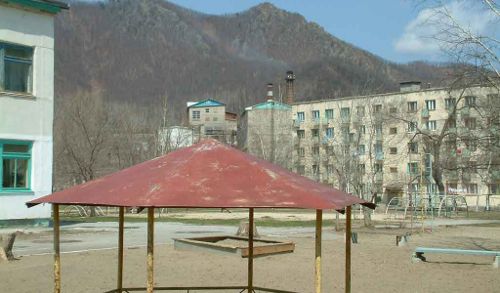Mitigating Lead Exposures
Rudnaya River Valley, Russia
| Location | Rudnaya River Valley, Russia |
|---|---|
| Pollutant | Lead |
| Cause | Legacy smelting and processing of lead, active lead mining |
| Population Affected by Intervention | 55,000 |
| Health Impact | Nearly a century of mining and refining of lead has left the soils of this region contaminated with heavy metals and other toxic substances contributing to high levels of cancers as well as lead poisoning, which is particularly severe among children. |
| Output | An international consortium is engaged in a multi-faceted project to mitigate the health effects of lead. Activities include: studying contamination and sources of exposure, conducting outreach and education, medical monitoring of children and cleaning up playground areas. |
| Outcome | Between 2007 and 2009, pollution remediation was conducted in a total area of 16,400 square feet. 90 percent of the children residing in this area saw an average of 37-percent blood lead level decrease. |
| Implications | A multi-pronged international approach with an emphasis on community education is highly effective in minimizing harmful impacts of industrial processes. |
| Remaining Challenges | Extensive contamination would require large-scale remediation activities and possibly relocation of some inhabitants. |
Context
As covered in the 2008 Report, metals smelters and processing heavily impact environmental conditions and often cause chronic and acute illnesses. Severe pollution of the Rudnaya River Valley area from mining, refining, and smelting activities resulted in a high cancer rate among residents. The district capital Dalnegorsk is contaminated with boron, sulfur, and heavy metals including lead, cadmium, and zinc. The second biggest town in the valley is Rudnaya Pristan, which translates into “mining port” and is built around the lead smelter and the seaport, is one of the most lead contaminated sites in Russia. Mining technology has not seen much efficiency improvement since 1920s. Extremely poor hazardous waste management has put local residents at high risk of lead poisoning and cancer, which is regularly reported in the area.
Site Details
Dalnegorsk (population 50,000) and Rudnaya Pristan (population 5,000) are located in the Russian Far East about 500 km northeast of Vladivostok. Rudnaya River flows into the Sea of Japan in the north of Russia’s Primorsky Krai or Maritime Region, a century old mining area. There are several other smaller towns in the valley that are also contaminated with heavy metals. Lead and zinc ore produced in the local mines is then processed at the refining factory in Dalnegorsk. The lead and zinc concentrate were transported in open cars to Rudnaya Pristan for smelting up until 2006. Today the concentrate is no longer smelted, only transported to the port of Rudnaya Pristan for shipping abroad. The mines, refining plant, smelter stack and the railroad were the main sources of heavy metals contamination of the area. The local population is very poor and used to growing most of its food in local gardens where soil is often contaminated with lead and cadmium far above the US EPA limits.
Health Impact
The impacts of lead are most severe on miners, smelter and refining plant workers, and children. For instance each of four consecutive directors of the smelter in the last 30 years died from cancer. Certainly, nearly all the children in Rudnaya Pristan are never completely healthy. The town has the highest rate respiratory diseases in the region and a number of other illnesses including neurological damage are reported. In Rudnaya Pristan about 50 percent of tested children had elevated blood lead levels even after the smelting of lead concentrate was stopped.
Testing shows that the health problems will persist as long as the town remains highly contaminated. In Dalnegorsk and other settlements of the valley the situation is a bit better – about 20 percent of children have elevated blood lead levels.
Exposure Pathways
In Dalnegorsk the most contaminated areas are near the refining plant, mines, and the railroad. In Rudnaya Pristan the most contaminated places are the central part of town near the smelter and the port area. The contaminants most harmful for human health are lead and cadmium that enter human bodies in the following ways:
- Inhaling dust: It is a problem during the dry summer and fall seasons. It poses most risk to children since they are exposed to the heaviest dust particles occurring at the level right above the ground.
- Playing with contaminated soil: Wherever children run and play, they are always on highly contaminated soil. Children living right across the street from the smelter are at the highest risk. It gets progressively cleaner as distance from the smelter increases; at five kilometers from the main smelter stack, the environment is nearly clean.
- Indoor dust: Lead particles are brought in houses with street dust and on shoes that walked on contaminated soil.
- Local contaminated crops: Children and adults eat fruit with contaminated dust. In addition, edible plants uptake lead and cadmium from the soil; unfortunately the local staple, potato, does this most effectively. Contamination varies with location, but it is a very important pathway of exposure.
- Air pollution: Emissions of heavy metals to the air were the most significant exposure pathway before lead concentrate smelting was stopped in 2005.
Intervention
Far Eastern Environmental Health Fund in partnership with Blacksmith Institute and TerraGraphics Environmental Engineering developed a plan to mitigate lead health risks in Rudnaya Pristan, Dalnegorsk, and other towns in Rudnaya River Valley. Early efforts started in 2004 focusing on several things such as studying contamination and sources of exposure, doing community outreach and education, and conducting medical monitoring of children. In 2007 the partnership was joined by the Green Cross Switzerland enabling the scope of the project to expand to include cleaning up playground areas.
Results
As the result of the project activities, the mining company switched in 2005 from smelting lead concentrate to the recycling of old lead batteries. This change drastically decreased the air pollution, which was the main source of lead poisoning in Rudnaya Pristan. In 2005-2006, the main railway was removed, except for the section between the mine and refinery in Dalnegorsk. This action eliminated the second most significant source of contamination. Meanwhile, specialists of the Far Eastern Environmental Health Fund conducted regular community outreach and worked to educate both children and their parents about lead health hazards. From 2005 blood lead monitoring was conducted every year. Through local medical personnel, each family with children with blood lead levels over 8 μg/dl received proper counseling and supplied with Detoxal 75, a biological food additive based on brown algae developed by Russian scientists for removing heavy metals from the human body. In 2007-2009 seven playgrounds –a total area 16,400 sq meters –were decontaminated.
The health results were dramatic. Among 40 children in Dalnagorsk, 36 of them (90 percent) saw blood lead levels decrease. Prior to the project, the average blood lead concentration of those 40 children was 13.9 μg/dl. After remediation of playgrounds, counseling families, and providing them basic treatment the average blood lead concentration became 8.8 μg/dl. Project partners consider such a significant (37 percent) drop as a first sign of success. Similarly in Rudnaya Pristan, although the sample was small, children at the highest risk demonstrated a reduction in blood lead levels an average of 23 percent in 2008 versus 2007.
Remaining Challenges
Although the risk of lead poisoning among children has been greatly reduced since 2005, it persists as long as the valley remains contaminated. The most significant progress has been achieved in Dalnegorsk where it is possible in the near future to come very close to solving the issue of lead poisoning. The major issue remains in Rudnaya Pristan, because of very high contamination of the area. To eliminate the problem there requires decontaminating dwelling areas near the smelter and port possibly including the relocation of some families from contaminated housing. Furthermore, contaminated agricultural lands remain a persistent, widespread and possibly insoluble problem.
Implementing Organizations
Far Eastern Environmental Health Fund, Blacksmith Institute, Green Cross Switzerland, Terragraphics Environmental Engineering.
References
Dalnegorsk / Rudnaya Pristan Success Story. Blacksmith Institute.
→ http://www.blacksmithinstitute.org/projects/display/31
Von Braun, Margrit. Environmental Lead Contamination in Russian Lead Smelter District, Russian Far East
Additional Photos
|
|
| Children play in fresh sand after heavily lead-contaminated soil has been removed. |
|
|
| Rudnaya Pristan’s lead smelter switched to battery recycling when the health hazards of smelting lead concentrate became apparent. |
|
|
|
|
| Residences and playground are right next to the lead smelter. |
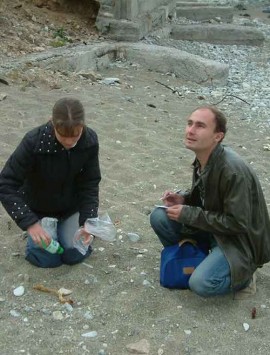
-
Phasing Out Leaded Gasoline
-
Ending Chemical Weapons
-
Improving Indoor Air - Ghana
-
Preventing Mining Pollution - Chile
-
Lowering Radioactivity - Chernobyl
-
Cleaning Urban Air - India
-
Removing Lead - Dom. Republic
-
Recapturing Mercury - Indonesia
-
Reducing Lead - Russia
-
Removing DDT - Tanzania
-
Restoring a Waterway - China
-
Removing Arsenic - India


